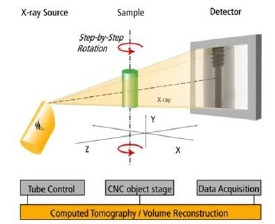Nov 12 2008
The Instituto Madrileño de Estudios Avanzados en Materiales [Madrid Institute of Advanced Studies in Materials] (IMDEA Materiales) is leading the ambitious European project DEFCOM, the objective of which is to develop non-destructive simulation and characterisation tools that enable manufacturers of structural composites to distinguish between different types of defects and thus increase the reliability of these materials.

Polymer matrix composites are currently used in many structural applications that require a significant reduction in weight for energy and/or environmental reasons. A paradigmatic example is the new composites developed for aeronautical applications. For example, as much as 25% of the weight of the new AIRBUS A380 aircraft is made up of composites (GLARE® and fibreglass and carbon fibre composites) in its wings, fuselage and tail sections and the new Boeing 787 Dreamliner boasts the first fuselage made entirely of composites. However, for these structural designs to be truly efficient, these new materials must be exploited to their maximum potential. Unless our knowledge of the materials progresses, this potential will be restricted by the presence of internal defects (delaminations, voids, wrinkles, etc.), which arise either from the manufacturing process or during the assembly and maintenance of these structures.
But, how can these internal defects be found? And once they have been located, what makes the difference between a defect being harmless and it genuinely compromising the structural integrity of the material? Currently, the aeronautical industry is required to carry out vast batteries of mechanical tests on different scales (from the material itself, through sub-components, to the entire structure), which can take as long as seven years, to validate and certify new materials for use. Wouldn't it be better to have the necessary understanding to be able to predict the mechanical behaviour of a new composite and, more importantly, the effect of any defects that could occur? Following several recent advances, this understanding is now within the reach of Materials Science and Engineering.
On the one hand, non-destructive analysis techniques have been developed, such as X-ray computed tomography. This technique is based on computer-assisted reconstruction of the three-dimensional microstructure of the material based on X-ray radiographies taken from various viewing angles. The development of new X-ray generation and detection techniques means it is now possible to achieve sub-micrometer resolutions, making this technique a valuable tool for internal characterisation of defects and the study of propagation of damage in composites with great reliability, as can be seen in the following images
On the other, new simulation strategies and the increase in computational power over recent years have made it possible to develop powerful micro- and meso-mechanical models. These explicitly take into account the configuration of fibres (and the typology of the defects), making it possible to predict both the mechanical behaviour and the mechanisms responsible for failure, as well as how they interact with pre-existing defects in the material.
In order to go into greater depth on these aspects and to develop tools that will enable composite manufacturers to distinguish between the various types of defects, IMDEA-Materiales is leading the DEFCOM project, with funding from the regional government of Madrid through the ERA-net MATERA network. The consortium, made up of Austrian universities and companies from aeronautical industry (SECAR) and the wind power sector, will spend three years working in this subject. For this, IMDEA-Materiales has a state-of-the-art X-ray nanotomography device, Phoenix Nanotom, with a nominal resolution of 0.3µm, and is using the most advanced multi-scale simulation techniques applied to composites.